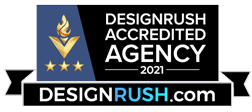Cultivating Company Culture & Talent Attraction Strategies for the Digital Transformation
John: Hey everybody, welcome to Life is Digital. I am your host, John Bianchi. Get ready to learn about digital marketing as we share our knowledge and perspectives on current trends, best practices and actionable tips to help you grow your business in the digital age.
Well, I am so excited because I have a really good friend of mine on the podcast this morning. I have Tim Lietz. He’s the Regional Director of Risk Compliance for Jefferson Wells here in the Raleigh office. Tim, so excited to have you on board this morning.
Tim: Thanks so much, John, I really appreciate the opportunity to do this and sit down and have a discussion with you.
Tim Lietz, Regional Director of Risk Compliance at Jefferson Wells, shares industry insights.
John: Well, This is going to be a great chat today because I love getting different perspectives on some things that may be business owners don’t necessarily always think about when running their business. What you work with with your teams and assisting chief audit executives, risk officers to help manage risk within their organizations, and then you provide subject matter expertise to clients with project needs and the IT finance, accounting and audit space. So, I think this is a really, really cool opportunity for people to learn about where the economy is, where the market is going, and how you serve your clients better in helping them to make those difficult choices seem a little bit easier and to manage risk more effectively. Before we jumped on today, we were discussing some industry facts that I thought maybe would be really helpful for you to share, so we were talking a little bit about some changes in the workforce environment. Could you share some of those things with the audience today?
Tim: Sure, absolutely. Thanks, John. Yeah, prior to the pandemic, we really saw what we were calling a war on talent for human capital. A lot of companies were struggling to find really talented people to join their teams. Now after the pandemic, we’re seeing an influx of talent that’s sitting on the sidelines on the bench looking for their next opportunity. So, we look at it as an opportunity to grow your business, to pick up some talent that might not have been available in the past, and I really elevate the skill set of your team.
During these unprecedented times, how has relationship building in business changed?
John: I love that, and I think when we talked earlier this week, this is an opportunity for businesses and business owners, and for your c-level teams, we shouldn’t be looking at the pandemic as… batten down the hatches. There’s actually a really good opportunity for companies to take advantage, like you said, of some great talent that might not have been in the marketplace beforehand. Maybe there are new markets opening up. We have a ton of clients that are now moving their business operations online, like in e-commerce. Maybe that retail store isn’t going to be the best outlet for a product. Now you’ve got to take that online and deliver your products and services and your opportunities there for customers and clients, I wonder if you could talk a little bit too, because you do manage a sales team and you work with new opportunities and client relationships. What has changed from your perspective on the sales process? How has that changed in how you bring the relationship now in a different way between client and between Jefferson Wells?
Tim: Yeah, sure. And, just as an example of what I spoke to you earlier, we were able to add a new member of our sales team here in Raleigh that was just available. She was in between opportunities because of COVID, and we picked her up and really got excited about having a very talented member of our team there probably in the past. Wasn’t looking for a new opportunity because she was on the sideline, we added a new member to our sales team here, right in Raleigh. Regarding working with my sales team, I work with anywhere from 10 to 20 sales people throughout our company at one time. What we’re really seeing obviously is all of our sales as a remote, it’s all digital, and so we’re having to connect with people through teams or Zoom, Google Hangouts. I had a few calls over the last few days, just with clients and sales targets, but it is all virtual. Like we’re doing here this morning. We’re also focused, we’re taking the time instead of really pushing to sell rigorously in this time frame, we’re focused more on building relationships with our existing clients, strengthening those relationships that we have. We are checking in with clients routinely, seeing how they’re doing, how their teams are operating in this remote environment, how are they staying safe, both their teams at work, but also their families, so we care about what’s going on in their life. We know that the stresses are increasing, but we’re trying to really build a stronger relationship with our clients.
How companies are positioning themselves in the marketplace.
John: I love that, and I think that’s something that I’ve been hearing and it’s been resonating with me and several other individuals I’ve had on board, is that this is a time to build relationships. Maybe this is where we plant the seeds, like you said, we reach out, we know someone’s hobbies and interests. We get to know them a little bit better. We reach out to someone new that maybe we hadn’t thought of in the past, or someone that might be a good conversation for us to have. So I like that, and we had talked also about this idea of now changing the environment to remote work and maybe some of that not going away.
How do you see it from a risk management perspective? Are companies changing their outlook on how they position themselves in the marketplace, maybe in terms of how they reach a new audience or they move forward with a new initiative? What do you see from your perspective on the risk management side?
Tim: Sure. I would say clients today are really evaluating the effectiveness of their remote working teams today and how that’s going to impact them in the future. Looking at maybe their real estate footprint. I’m actually in my office today for the first time in a few weeks, and I’m the only one here. When walking in, there’s only about 15 or 20 cars in the parking lot today, and we have a pretty sizeable office space out here, so I think companies are really looking at their real estate footprint today. Do they really need all the space that they currently have, because it’s not being utilized today.
Then also just look at how they can be more effective, how they can be better connected as teams and adjust to this remote working scenario. I talked to a client this morning who says they’re actually they feel more connected as an internal team than they ever have because they’re on video calls, almost routinely throughout the day. They’re checking in with each other. My team spans from Washington DC to New Orleans to Miami, and I’m on routine video calls with these guys every day, so I think there’s ability for us to stay a little bit more connected in this work environment despite that we tend to work from home in an isolated kind of environment. If we take the opportunities to reach out to one another and really connect, like you said, build stronger relationships, I think we can come out of this a little bit stronger.
The importance for a company to tell their story online.
John: Yeah, I love that. And I think that’s probably the key for me when I’m thinking about marketing and branding and sales… now, more than ever, I think the communications, the strategic positioning of your company, the messaging that you use… I talk with someone earlier this week who was a global marketing director for a large company here in the Raleigh area, and he said, “You’re going to have to tell a story. Even if you’re a large manufacturing company, people want to know the story behind why you bring value, why should I work with you versus someone else. How important is that for companies and clients today from your perspective about really effectively getting their message across?
Tim: No, absolutely, I think what you need to demonstrate to your audience, to your clients, to your customers, to our business partners, is really your corporate culture, your values that are used to aspire to as an organization. It’s a tone at the top set by generally the CEO, the C-Suite, and at times the Board, and really getting that message consistently communicated throughout the entire organization – how you’re managing going through this pandemic today. Some of the challenges that the organization is facing, but then also the ways that you’re meeting those challenges and going to emerge from this stronger, we had talked about the digital footprint that companies have. It’s really important to have that all in sync, to exhibit your current culture, the current values that you have, the new millennial generation of workers really want to make sure that you are matching up your corporate values to their values, and if they don’t see a nice fit, they’re not really that interested in coming to work and join your team. So, I think it’s important to have things synced up and current and relevant with today’s business environment.
John: That makes absolute sense. A friend of mine who does real recruiting and she’s working with companies, she said exactly what you said. You have to portray your company’s vision and values through your digital assets. It’s no longer just having a website that talks about product benefits and features. Are your LinkedIn profiles reflecting the expertise of the company? Does it all look synced? Because now more than ever, like you said, a millennial hire is potentially going to look to those channels even above maybe your general website or those types of marketing materials that you have. How do you think the sales and client acquisition process is going to change now? Maybe permanently. Obviously, we’ve got a lot of remote working now. Do you see some things that might remain the same as we move forward in that process?
Tim: Sure, in past, obviously, we spend a lot of time in front of clients face-to-face at their office locations, going to coffee with them, having lunch, maybe meeting for a happy hour. That obviously has gone away. What we’ve shifted to is offering more content, really similar to what you’re doing with your podcast series, is we’re doing national webinars about every other week on a certain topic that we’d like to share our expertise with anyone and not necessarily just clients. We’re doing virtual seminars for our clients, where we might have 9-10 sessions over a two to three day period on different technical topics in our area of expertise, so I think those are ways that we’re shifting getting our message out digitally through virtual seminars or conferences, and we’re also spending a lot more time on LinkedIn, sharing content, putting content out there, creating content on a routine basis. I try to do that once or twice a week and get something really relevant out into the marketplace through LinkedIn.
Key Takeaways
John: I think that makes absolute sense, and that’s something that I’ve been trying to do as well, and I see a lot of value in the sharing of content and creating that thought leadership, right? So in your role, people know your title, they know what you do, probably on a day-to-day basis, but if you’re sharing relevant industry content or you’re even cross-promoting and saying, Hey, this is something I found interesting over here that adds value in the marketplace, that’s how you’re going to attract those relationships, and then obviously that’s how that builds… So yeah, I would agree with you. I think that the permanency of creating and sharing valuable content is probably now more than ever important as we move forward in this new kind of way that we interact. Like you said, we’re meeting digitally right now and that’s great. And, we’re able to have that conversation.
We’ve really covered some really cool topics today. I wonder if you could maybe leave our audience with a couple of key takeaways, maybe a few key industry factoids, if you will, that can really help them impact their bottom line, maybe something they should think about when bringing on a new team member, managing risk but being able and open to a new opportunity or a new market. What are some things you could leave the audience with today?
Tim: Well, just the highlights, I would say from our conversation this morning, John, would really resonate with me. I think there is some great talent out there that’s available today that was not available six months ago, let’s take advantage of some of that talent and maybe evaluate being able to build the stronger team, so when we emerge from this pandemic, our team is going to be stronger when we go back to market full force.
The other thing I think is just maybe thinking as a sales team or marketing team, getting back to the fundamentals of selling, the fundamentals of building strong relationships with your clients. Like you mentioned, just reaching out to our clients and trying to help them. Keep them educated, keep them aware of emerging trends that you’re seeing in the industry. It’s not a push to sell them something that will come from building a strong relationship with your customers and clients. They start to trust you more. You become more of a trusted advisor, a lot of people talk about that, right?
Really, it’s just someone that they rely on to bring them good information, solid information, and they can then reach out to if they have a need in the future, you’re kind of top of mind as maybe they’re number one choice to go to for help. So, that’s really what we focus on right now, and maybe that’s something that your audience could really hone in on and enable them to get better.
John: I think that’s fantastic. And what you touched on there is being available, being top of mind, but having that service-oriented mindset to be in front of the client or prospect, so that when they need you, they know that they can trust that, of course, you can deliver on the great value proposition that you have, but you’ve taken that extra step to be in front of them and be a helping hand to them when maybe they didn’t need it right then, you can then build that relationship with them to moving forward.
This has been a fantastic conversation this morning, I really appreciate you taking your time out of a busy morning to join me on the podcast, and I really appreciate you for taking the time to do this with me.
Tim: Thanks so much, John, I really appreciate having the chance to sit down with you today. Thanks again for the opportunity.
John: Of course. Well, I also appreciate you, the audience, for joining Tim and I on this episode of Life is Digital. Remember, I am your host, John Bianchi. Please remember to also rate, review and subscribe to the show. There’ll be some information in the comment section below until next time, folks. Don’t stop marketing.










